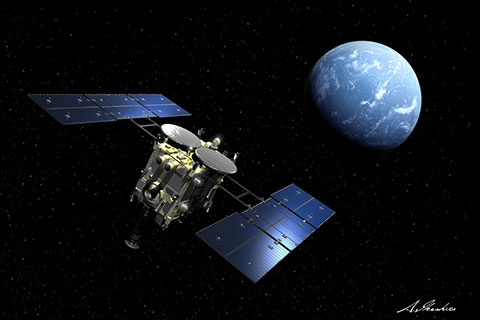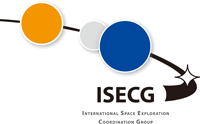About Research on Lunar, Planetary Science
 |
Learning about the planets and the Moon means learning about the origin of the solar system. In pursuing these studies, we are seeking answers to a question we are always asking: how was the Earth born? JAXA has been trying to find answers by launching Orbiters to the Moon and the planets to collect data. |
|---|
Press Release
index-
- Feb. 6, 2025 (11:00) [release]
- Japan’s First and World’s Smallest Transformable Nano Rover Wins Prime Minister’s Award at Japan Open Innovation Prize
Ongoing / Planned Planet Probe Project
JAXA carries out basic research to analyze data provided from exploration plans, such as those noted above. The wide range of studies and developments have been conducted, such as the study of planetary science, which have been carried out in the world, especially in the U.S.A., using data from probe vehicles, and developments of measuring instruments to be equipped to probe vehicles.
We are actively drafting plans for exploration far in the future. Examples include: an exploration of the Solar System using photon sail, a highly ambitious probe to the Moon, an escape mission from the ecliptic, the next exploration of an asteroid, and an exploration of Jupiter. With strong cooperation from researchers in the technological field, these plans might be realized after further investigation into details. The scientific objectives of this type of exploration will also be investigated through discussions among researchers in Japan and abroad.
| In Operation | Asteroid Explorer "Hayabusa2" | Hayabusa2 will target a C-type asteroid Ryugu to study the origin and evolution of the solar system as well as materials for life by leveraging the experience acquired from the Hayabusa mission. |
|---|---|---|
| Mercury Exploration Mission "BepiColombo" | The "BepiColombo," a Mercury exploration project jointly planned by Japan and the European Space Agency (ESA), will conduct comprehensive observations of Mercury's magnetic field and its surface and interior. | |
| Venus Exploration Mission "AKATSUKI" (PLANET-C) | AKATSUKI is a planetary exploration project following the Martian orbiter "NOZOMI" (PLANET-B) to unveil the mysteries of the atmosphere of Venus. | |
| Future | Martian Moons Exploration (MMX) | The goal of JAXA’s MMX mission, scheduled to launch to Mars in early 2020, is to shed light on the origin of Martian moons and the evolutionary process of Mars’ atmosphere. Observation of Phobos and Deimos, two moons of this planet and sample return from either one are part of this mission. |
| Operation Complete | Small Solar Power Sail Demonstrator "IKAROS" | IKAROS is the world's first solar powered sail craft employing both photon propulsion and thin film solar power generation during its interplanetary cruise. |
| Smart Lander for Investigating Moon (SLIM) | The SLIM aims at achieving precise navigation to a specific landing point on the moon. Through the SLIM, JAXA seeks to demonstrate the technology to reach the landing precision necessary for future lunar exploration. The technology will also realize the small, light exploration system. | |
| Asteroid Explorer "Hayabusa"(MUSES-C) | The "HAYABUSA" (MUSES-C) is an engineering test missions that aims to explore an asteroid, establish sample return technology, and verify the "ion engine" and "automatic navigation system." | |
| SELenological and ENgineering Explorer "KAGUYA"(SELENE) | The "SELENE" is a lunar explorer to acquire data for understanding the Moon's origin and evolution and for the development of technology for future moon exploration. |
ISECG - Mankind's Endeavors in Space

JAXA is actively participating and playing a major role in the ISECG: International Space Exploration Coordination Group, a mechanism for technical research toward manned space exploration via international cooperation.
A Roadmap to International Space Exploration
With the goal of future manned exploration of Mars (circa 2035-2040), ISECG is now considering the significance of its realization, the technical path (roadmap) and necessary space systems for implementation, etc. The roadmap was first published in 2011, and was followed by a second edition in 2013. In the second edition, the International Space Station (ISS), shown as one of two options in the first edition, was amalgamated with the lunar vicinity mission as the next step.

Report on the Significance of Space Exploration “Bringing the Benefits of Space Exploration”
ISECG has summarized in a report the numerous benefits to mankind produced by space exploration. The report classifies the benefits in the fields of
1) Scientific and technological innovations;
2) Cultural inspiration;
3) New approaches to global problems;
while summarizing examples of the significance of space exploration.
The 15 Active-Participant Space Agencies in ISECG (October 2015)
(Alphabetical order)
Contents

- Mar. 5, 2010
- JAXA Explores the Planets of the Solar System














